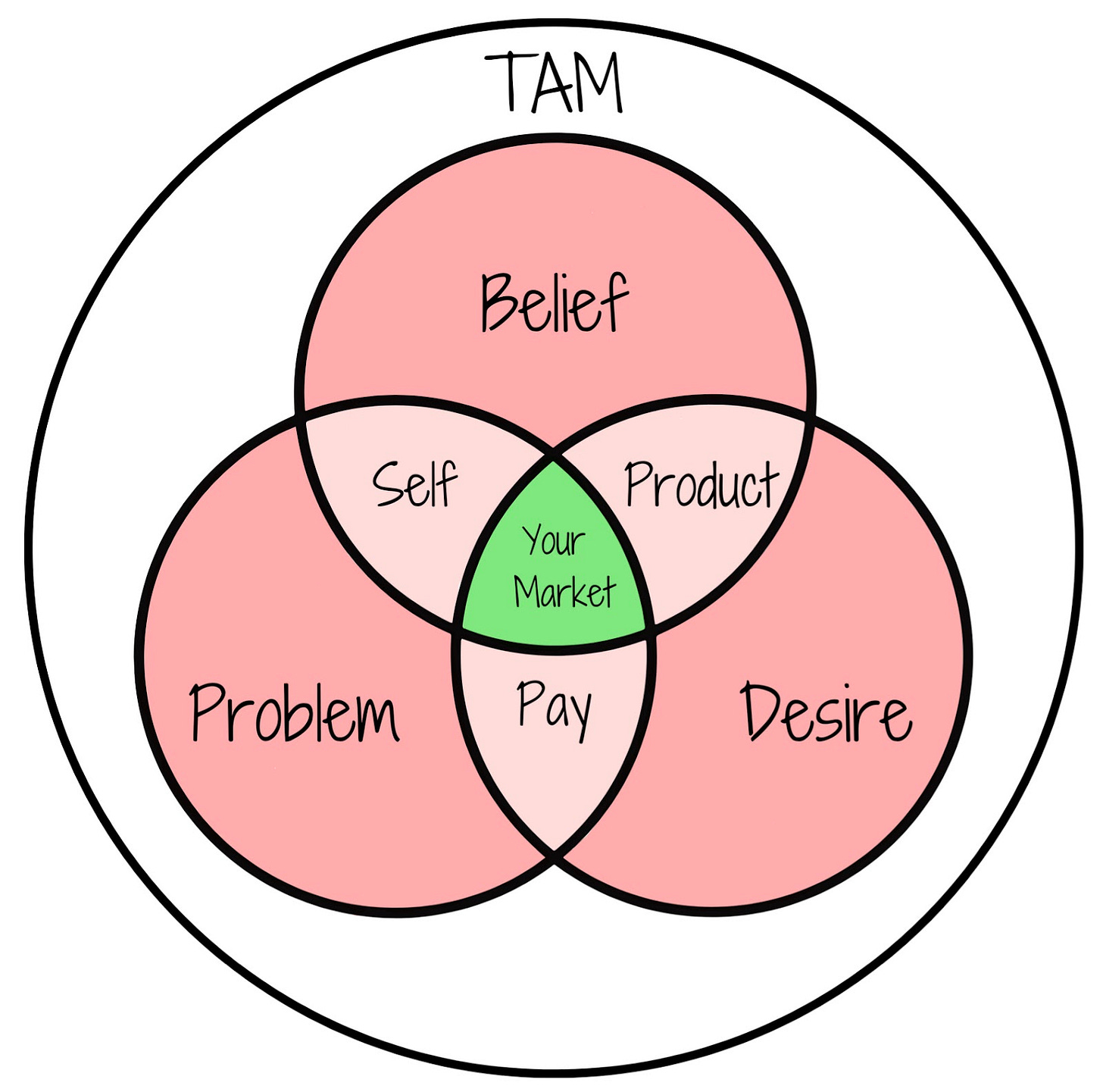Brought To You By CLICKFUNNELS (SPONSOR)
Hey Fellow Direct Marketer,
It's Zachary J. Radford, coming to you with a fresh issue of our Direct Response Secrets newsletter.
Have you ever dreamed of truly grasping the pulse of your audience, to understand them so intimately that your marketing messages resonate like a perfectly tuned instrument?
This week, we're peeling back the layers of a crucial marketing strategy that can mean the difference between spinning your wheels and truly accelerating your success.
We're diving deep into the art of identifying and connecting with your perfect audience.
Not all customers are created equal, and depending on who we choose to serve will have a massive impact on you and your business!
In this issue, we are gonna dive deep into finding that perfect audience for your target!
Let’s get it….
A Word From Our Sponsor CLICKFUNNELS
Rev Up Your Revenue with ClickFunnels 2.0! 🚀💰
Hey Future 7-Figure Earners, tired of trying to turn your audience into paying customers? Say hello to ClickFunnels 2.0 - your ultimate conversion machine!
Think proven funnel templates, easy drag & drop editor, and high-converting checkout pages - zero computer skills needed. Plus, you get to build member areas, gain killer insights, and run A/B tests - all in one place!
Ditch the sadness for a steady stream of customers, smooth sales, and a booming business. Your online success is only a few clicks away with ClickFunnels!
Follow the footsteps of business giants like Daymond John and Tai Lopez. Ready to join the success wagon? Start your FREE trial today. No strings attached.
Click Here to Begin Your ClickFunnels 2.0 Adventure!
Remember, your perfect audience is out there waiting to be wooed. Let ClickFunnels 2.0 take you there. It's time to turn visits into victories!
The Right Person- Your Perfect Audience
Rewind a few years. I was just a guy filled to the brim with dreams and a burning desire to make it big in the world. I took the plunge and started my agency. (For the third time…) Bold? Yes. Foolish? Maybe. But I was hell-bent on making it work.
My plan was simple, or so I thought – target every entrepreneur out there. Cast the net wide, and catch big, right? Well, let's say the universe had other plans.
My dream was sinking faster than a lead balloon. Long days, short nights, and yet, the business was barely limping along.
But, hey, I was born stubborn. This was just a rough patch, I told myself. I just needed to hang in there.
That’s when fate stepped in. A chance conversation with a mentor of mine turned out to be the life jacket I needed. Instead of casting my net wide, they said, I should focus. Find a niche and dig deep. So, I did.
I chose eCommerce brands. I won't lie; it was a risk. But, the appeal? Irresistible.
The road was rough. Think of trekking on a mountain with a boulder strapped to your back. That's what it felt like. I had to build new networks, dive into the nuances of the eCommerce world, and overhaul my marketing strategies.
Then, came the breakthrough. I'd spent countless hours getting to know eCommerce businesses, understanding what makes them tick, and tweaking my presentations to strike the right chord.
I took a deep breath and launched a direct response campaign.
Slowly but surely, the gears started turning. The response was trickling in, and then it came flooding. My hard work paid off – we did $500k in a single year. (This was a lot for me at the time.)
Hell yeah, dreams do come true!
I had uncovered the right person that I could go all out in serving. (This was a lightning-in-a-bottle moment for me.)
That success wasn't the finish line; it was just the start. I had a taste of what knowing your audience, serving them right, and delivering spot-on messages could do. And I was hungry for more.
Today, I no longer run my agency, but the results we got for our client is a testament to the power of knowing your audience and serving them right.
The journey was long, the lessons hard-earned, but hey, it was all worth it. The focus, the understanding, and the willingness to learn were the weapons I armed myself with.
And with them, I was invincible.
So, the moral of the story is…
Knowing the “who” you serve is the difference between success and failure.
THE PERFECT AUDIENCE
Finding You're Audience:
This is a mental exercise that you can go through to better understand your target market. This is not an exact science, but it will help you get on the right track.
1. Problem: Understanding the problem your product/service seeks to solve in your target market. This involves the following steps:
Self: Does your target market believe they can solve this problem without your product/service? If they believe they can solve the problem without your help, your task is to demonstrate why your solution is more effective or beneficial.
Pay: Does your target market have the financial means to pay for a solution to their problem? If so, your product/service could be a feasible option for them.
2. Belief: Tackling the self-limiting beliefs that may be preventing your target market from solving their problem. This includes:
Self: Does your target market believe they can solve their issue with your help? Your communication should instill this belief in them.
Product: Does your target market believe your product/service is the answer to their problems? This involves convincing them of your product/service's effectiveness and suitability for their needs.
3. Desire: Are you leveraging an existing desire? Crafting new desires is possible, but it's far more effective to tap into a pre-existing desire. This requires:
Product: Is your target market motivated to use your product/service to solve their problem? You need to stir a strong desire for the transformation your product/service promises.
Pay: Is your target market willing to invest in your product/service as a solution to their problem? You need to demonstrate the value of your product/service and create a sense of urgency or scarcity to make them willing to pay.
Great, you found your market! But can you reach them easily? Because if not, you are going to have a hard time bringing all of this together.
Find or better refine your current target market:
Total Addressable Market (TAM):
Your TAM is the total revenue potential of your product/service, calculated by identifying your ideal customer, estimating their number in the market, and multiplying this by your average revenue per user (ARPU). This will give you a good idea if a market makes sense for you to serve.
Step 1: Define your product or service offering. What problem does it solve? What need does it fulfill?
Step 2: Identify your ideal customer. Who benefits most from your product or service?
Step 3: Estimate the number of these ideal customers in the market. This can involve market research, surveys, census data, and industry reports.
Step 4: Calculate your TAM by multiplying the estimated number of customers by the average revenue per user (ARPU).
Understanding your TAM helps you better allocate resources and make informed business decisions. The larger your TAM, the more growth potential for your business.
Selecting a Submarket:
Selecting a submarket involves identifying a narrower, more specific audience within your larger market that would benefit greatly from your product/service. This allows for more targeted and personalized marketing strategies.
Step 1: Identify your larger market.
Step 2: Segment this market based on specific criteria like geography, demographics, behaviour, etc.
Step 3: Analyze each segment's attractiveness considering factors like size, profitability, competition, and alignment with your business goals and capabilities.
Step 4: Choose the most attractive segment as your submarket.
This process allows you to concentrate your efforts on a specific, highly targeted audience, thereby improving efficiency and effectiveness in your marketing.
Setting Client Values:
Client value is about understanding and defining the characteristics, behaviours, and potential that your ideal clients possess. These values align with your business's capabilities and goals, allowing you to attract and retain clients that can contribute significantly to your success.
Step 1: Identify Your Ideal Client Profile
Start by creating a detailed profile of your ideal client. This could include attributes like their industry, size, location, and financial stability, as well as their needs, challenges, and goals. Consider aspects like the client's willingness to innovate, potential for growth, and alignment with your company's values.
Step 2: Define Key Value Indicators
Once you have a clear profile, establish the Key Value Indicators (KVIs) - these are markers of success that will help you determine if a client fits your ideal profile. Examples could be the size of the potential contract, longevity of the relationship, or the strategic fit with your business objectives.
Step 3: Set Expectations
For each KVI, set a realistic expectation. These expectations will serve as benchmarks to assess potential clients. For example, you may want clients who are not in survival mode and have a product or service that is already performing well in the market.
Step 4: Prioritize Potential Clients
Use the KVIs and expectations to evaluate and prioritize potential clients. Those that meet or exceed your expectations are high-value clients that deserve the most attention.
Step 5: Review and Refine
Setting client values is not a one-off task. Regularly review your KVIs, expectations, and the performance of your clients to ensure that you continue to focus on high-value clients.
Setting client values in this way allows you to proactively target and work with clients that can bring the most value to your business, leading to better client relationships and higher profitability.
Crafting Detailed Buyer Personas:
This involves creating detailed profiles of your ideal customers, including their demographics, psychographics, needs, and pain points. It assists in understanding your audience better and tailoring marketing messages that resonate with them.
Step 1: Identify the common characteristics and behaviours of your ideal customer.
Step 2: Group these characteristics into personas representing different customer segments.
Step 3: Flesh out these personas with details like demographics, psychographics, needs, pain points, motivations, and preferred communication channels.
Step 4: Use these personas to guide your marketing and sales strategies.
Understanding the Customer Journey:
The customer journey is the process a customer undergoes from becoming aware of your brand to making a purchase. Understanding this allows for tailored messaging and strategies at each stage, improving the chances of conversion.
Step 1: Identify the different stages of your customer's journey (Awareness, Consideration, Decision).
Step 2: Understand the needs, behaviours, and touchpoints at each stage.
Step 3: Develop tailored messages and strategies for each stage to guide your customer towards purchase and beyond.
Cultural Considerations:
These involve understanding the cultural nuances of your target audience, which can impact their perception and acceptance of your product/service. This ensures your marketing messages are culturally sensitive and relevant.
Step 1: Understand the cultural context of your target market.
Step 2: Be aware of and respectful of cultural norms, values, and traditions.
Step 3: Adapt your product/service and marketing strategies to align with these cultural nuances.
Reachability:
Reachability refers to your ability to reach your target market with your marketing efforts effectively. It involves understanding where your audience spends time and their preferred channels of communication and tailoring your strategies accordingly. I really dive deep into this in the “Right Time” that I will be posting in a couple of weeks.
Step 1: Identify the networks and platforms your target market uses.
Step 2: Are they on LinkedIn, Facebook, Twitter, or niche forums? What software do they use?
Step 3: Use this information to tailor your marketing efforts and reach your audience through the right platforms and channels.
Customer Feedback Loop:
This is a process of actively seeking, analyzing, and acting upon feedback from customers. It helps in understanding their needs better, improving your product/service, and enhancing customer satisfaction.
Step 1: Develop methods to collect customer feedback (surveys, reviews, social media, customer service interactions).
Step 2: Analyze this feedback for insights into customer satisfaction, product/service improvements, and market trends.
Step 3: Implement changes based on feedback and communicate these changes to customers.
Step 4: Repeat the process continuously for ongoing improvement.
Vetting a Market:
Vetting a market involves determining whether your target audience possesses the ability and willingness to purchase your offerings. This requires market research, understanding the audience's financial capability, and evaluating their perceived value of your product/service.
Step 1: Identify your target market.
Step 2: Conduct market research to understand its size, growth potential, competitive landscape, and customer behaviour.
Step 3: Validate the market's ability to pay by looking at the average income levels, spending habits, and price sensitivity.
Step 4: Validate the market's willingness to pay by identifying their pain points and understanding how well your product/service resolves them.
The Right Person & Key Takeaways:
Secret #1: Targeting Masterstroke: Knowing your Total Addressable Market (TAM) and your specific submarket isn't just useful; it's a game-changer. It narrows down your audience, setting the stage for targeted ads that hit the bullseye.
Secret #2: Customers Are Not Created Equal: Recognize this, and focus your energy on the customers who pack the most punch in terms of value.
Secret #3: Non-Linear Journey: The customer journey is a winding road, not a straight line. Tailor your strategies to each stage to keep your customers engaged and moving forward.
The Wrap Up
💡 "Marketing is really just about sharing your passion." - Michael Hyatt
As we conclude this issue, I want you to reflect on the importance of truly knowing your audience. Remember, every piece of your marketing strategy, from identifying your Total Addressable Market to crafting detailed buyer personas, is a thread in the fabric of your connection with your perfect audience.
Continue to fine-tune your strategies, embrace the non-linear nature of the customer journey, and listen to your customer feedback. Above all, share your passion with your audience because that is the essence of effective marketing.
To your health & wealth,
Zachary J. Radford
Direct Response Marketer
P.S. Want To Become A 7-Figure Earner Faster?
Be a guest on the “Direct Response Secrets“ podcast!
Be featured as an expert in your field.
Get mass exposure to our growing audience.
Put my marketing skill to work for your business.
Together we can grow our business faster!
Click Here To Get Featured On The Pod Here:
https://form.jotform.com/231106139544248
👥 Know someone who might benefit from this issue?
Forward it to them:















